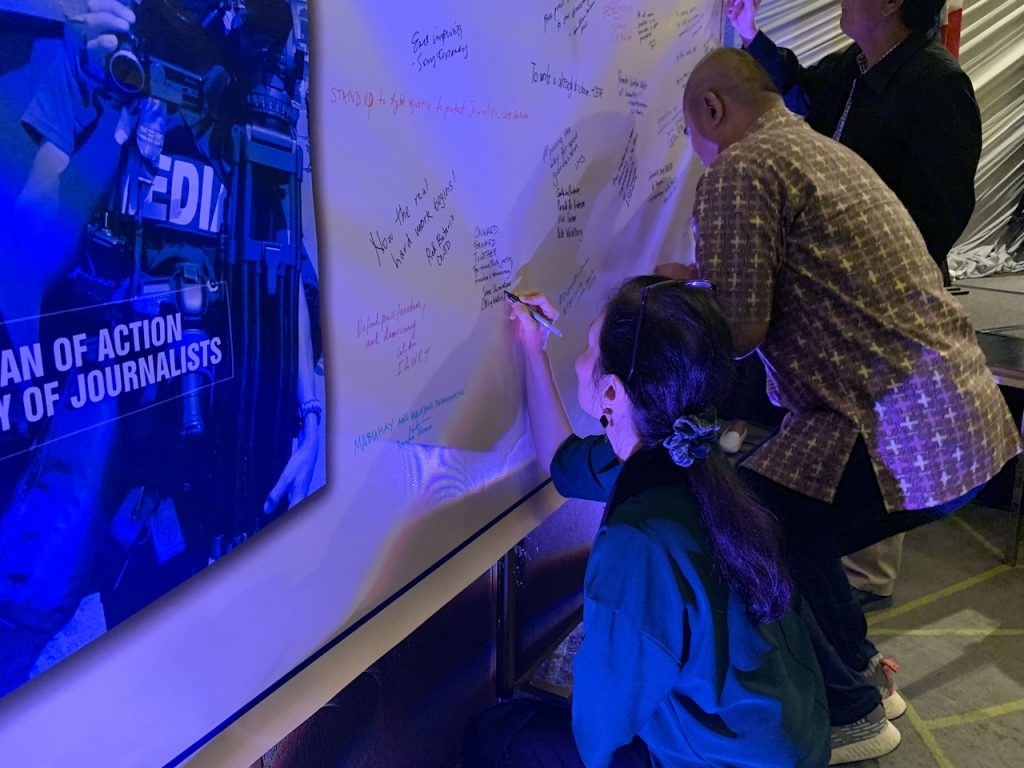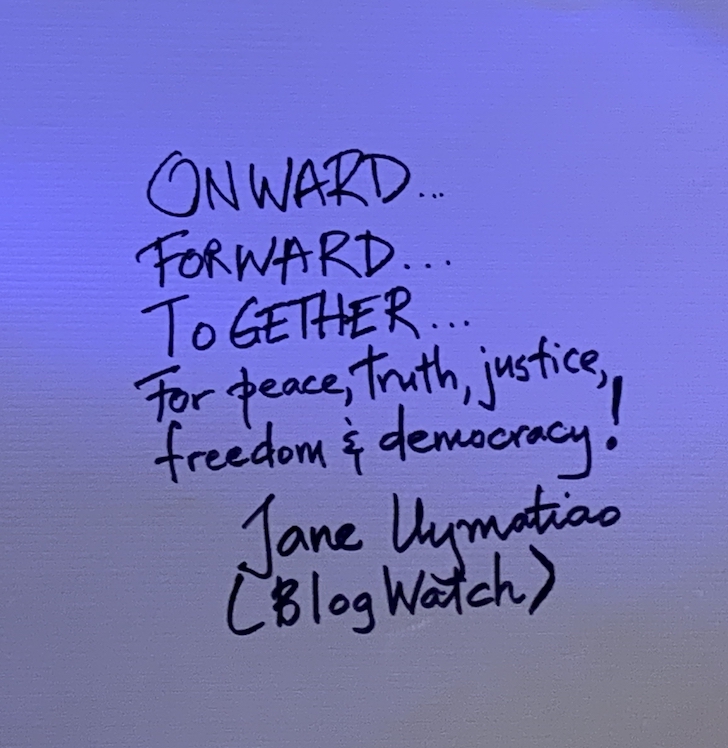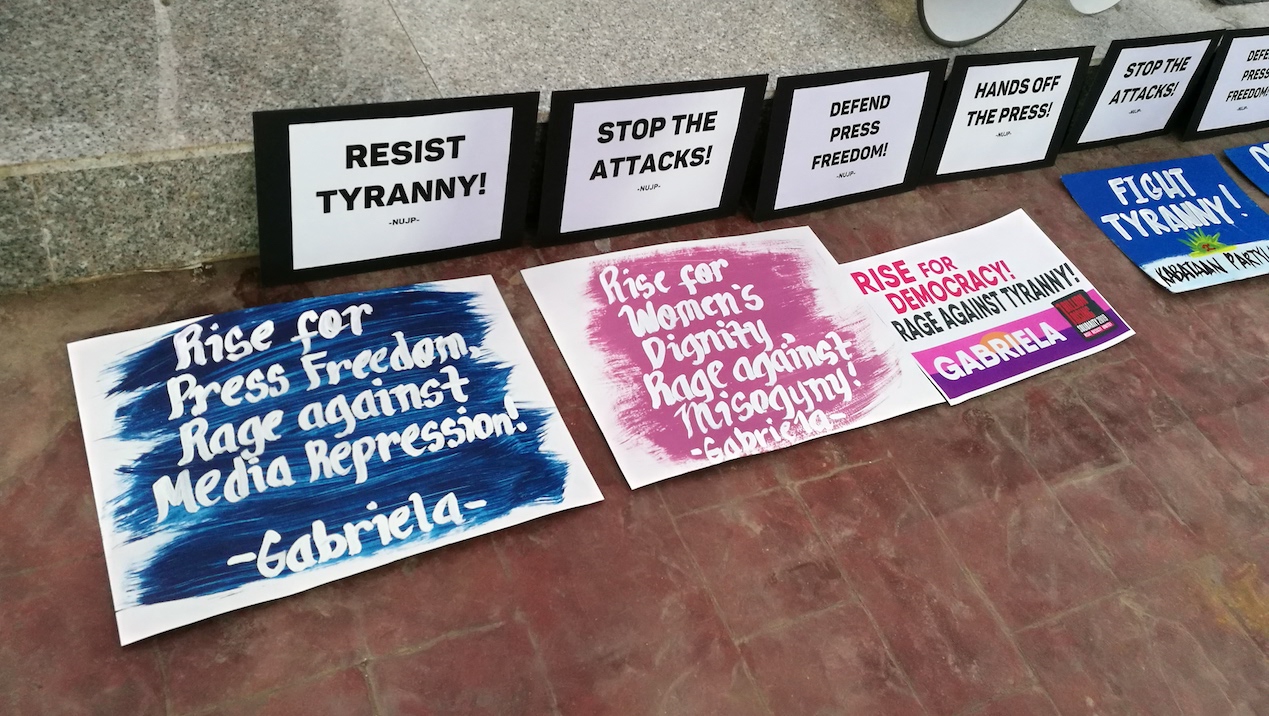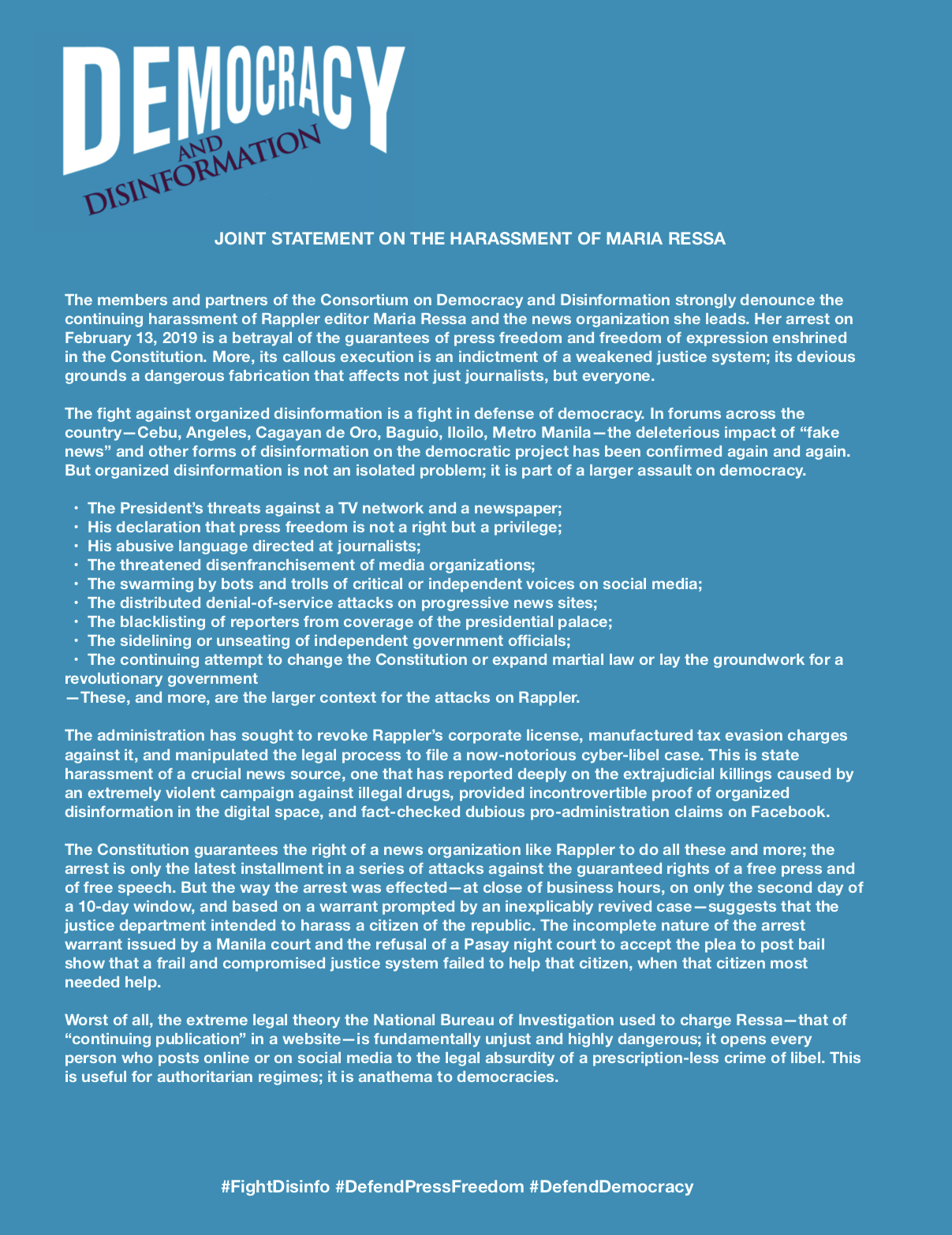A national plan that provides a framework for the safety of journalists is launched by multi-stakeholders
On the eve of the 10th year anniversary of the Maguindanao massacre, journalists and other stakeholders came together to witness the launch of the Philippine Plan of Action on the Safety of Journalists (PPASJ).
The PPASJ is the first of its kind worldwide. We are now in a critical time in our history for media, journalists (and may I add, advocates and critics) in the Philippines. Since 1986, a total of 165 media people have been killed. Today, November 23, 2019, marks the 10th anniversary of the Maguindanao massacre where 58 people, 32 of whom were journalists, were ambushed and massacred. Despite the numerous witnesses presented, the murderers have not yet been convicted with finality.
In 2012, the UN Plan of Action on the Safety of Journalists and the Issue of Impunity was launched, providing a framework for UN member states to craft their own national programs to address the safety of its media practitioners.
In response, various sectors and stakeholders, at the national and regional levels, came together from 2018-2019 for multi-stakeholder consultations. The PPASJ is a result of all the consultations. It was developed as part of the 2018-2020 Safeguarding Press Freedom in the Philippines project whose goal is to “enhance the enabling environment for the exercise of press freedom and establish safety mechanisms for journalists and media workers that are locally anchored and sustainable.”
While mainstream journalists have always been at risk due to the nature of their work, bloggers like us, who are mere citizens exercising our voices as our right in a participatory democracy, have not been spared too from online attacks on our persons. We were glad, probably relieved as well, to be included in the consultative process and covered by the document’s framework.
The launch was attended by the PPASJ project’s multi-stakeholders including some law enforcers from the Philippine National Police and representatives of government, including former Chief of Staff of the Philippine Task Force on Media Security (PTFoMS), Atty. Abraham. A. Agamata, who was part of a panel.
Scope
The stakeholders included in the implementation of the PPASJ include media development organizations, media houses and news organizations, press and broadcast associations, academia, civil society organizations and nongovernment organizations, independent constitutional bodies, national and regional government agencies, state security forces, and international organizations and UN agencies.
From 2020-2024, the PPASJ hopes that its various components and strategies are operationally in place. It is hoped that with an established framework, all stakeholders ensure that there is an environment for journalists that will reduce to a minimum the number of reported cases of harassment, intimidation, threats and other forms of attack while allowing journalists to pursue stories without fear of prosecution and punishment.
Flagship Areas
Five flagship areas were identified during the PPASJ process as priority areas for national action with regard to journalist safety:
- Integrity and Professionalism – enhancing the competencies and ethical standards of journalists
- Conducive Working Conditions – rights of journalists and media workers to economic and job security and occupational health and safety as prescribed by international protocols
- Safety and Protection Mechanisms – institutionalizing the mechanisms for safety and protection and will include risk mapping and safety training courses, monitoring/documenting/reporting attacks and threats, and providing quick responses and safe spaces, tools and protective equipment
- Criminal Justice System – examination of laws and policies that undermine press freedom and safety and, if necessary, advocate for their repeal or amendment
- Public Information, Journalism Education, and Research – media and information literacy initiatives to enhance greater public understanding and appreciation of media’s role in protecting democracy and the public’s recognition of their role in safeguarding media freedom; journalism education that is more relevant by including topics on safety and protection of journalists
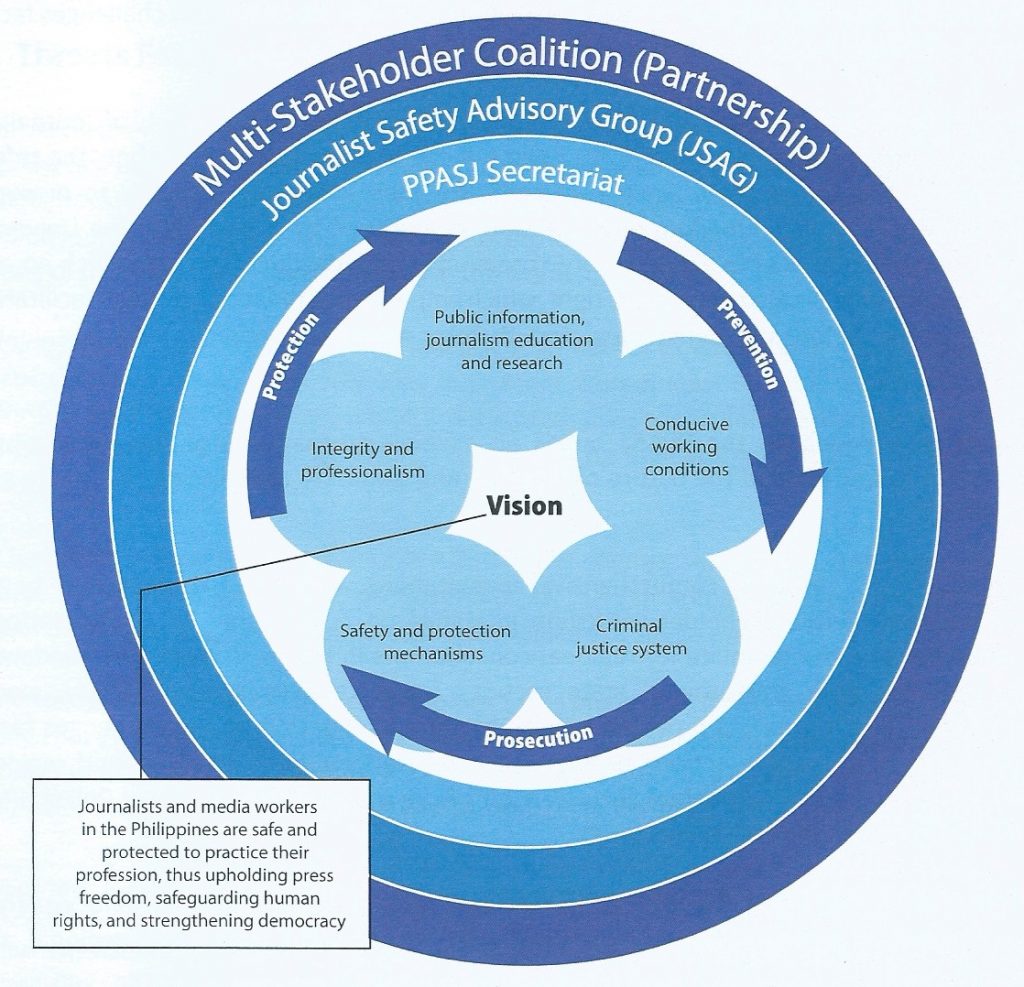
A panel discussion followed the launch to discuss how to sustain the PPASJ through the 4Ps framework, namely:
- Prevention
- Protection
- Prosecution
- Partnership
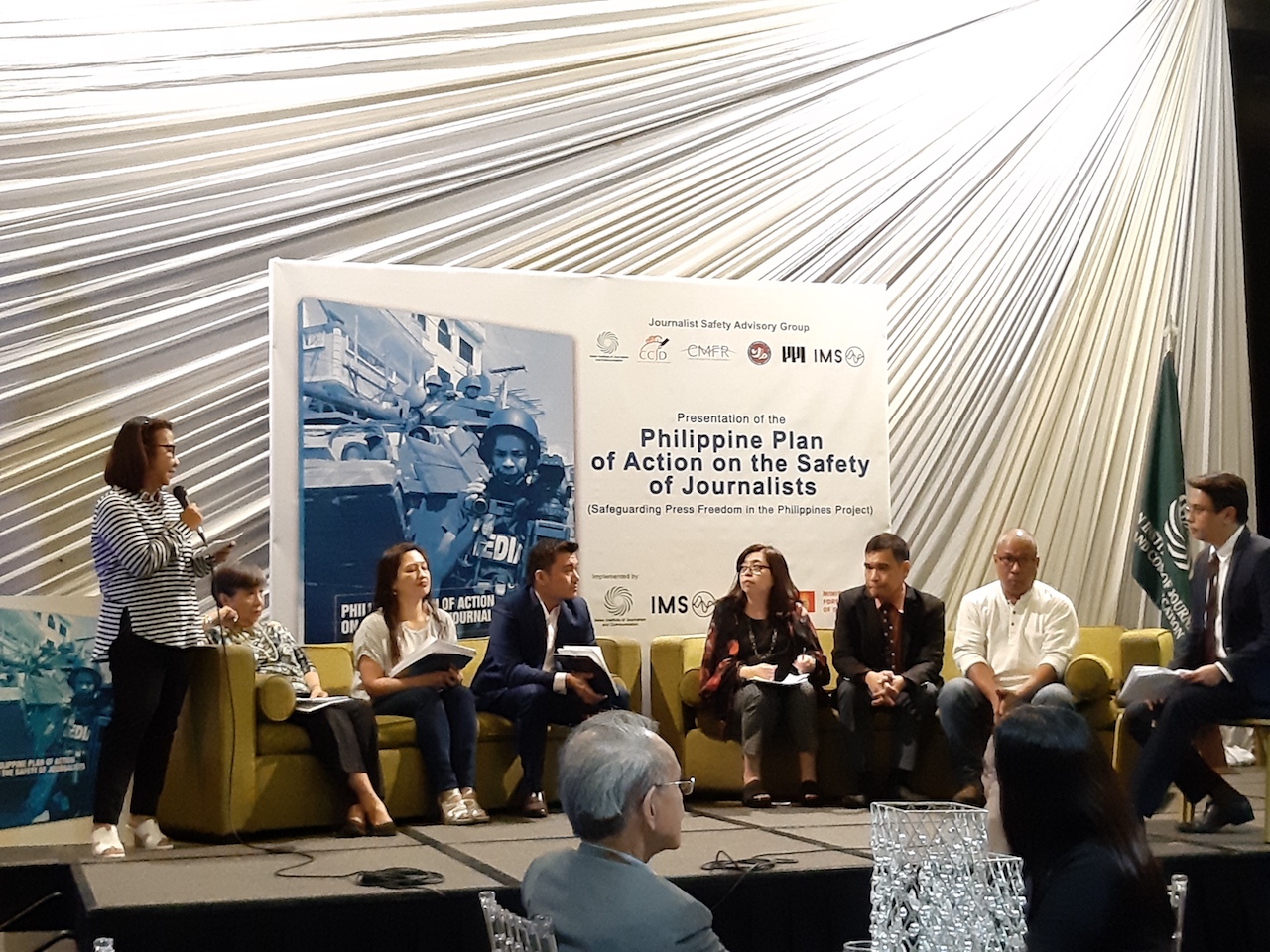
At the end, stakeholders were invited to write words of encouragement on a PPASJ tarp. I went forward to write my own words. The diversity of stakeholders in the room meant that we probably would not always agree on all issues but on the issue of media safety, we were united and optimistic that the PPASJ framework would not only enhance the safety of media workers but would also increase public awareness of the critical role media plays in a democracy.
The implementing partners of the project are the Asian Institute of Journalism and Communication (AIJC) and International Media Support (IMS). They collaborated with media organizations to form the Journalist Safety Advisory Group (JSAG) which provided the strategic advice and guidance on the PPASJ. Members of JSAG are comprised of the Center for Community Journalism and Development (CCJD), Center for Media Freedom and Responsibility (CMFR), National Union of Journalists of the Philippines (NUJP), Philippine Press Institute (PPI), AIJC, and IMS.
The PPASJ project was also supported by the European Union and the Ministry of Foreign Affairs of Denmark as co-funders of the Safeguarding Press Freedom in the Philippines project.

